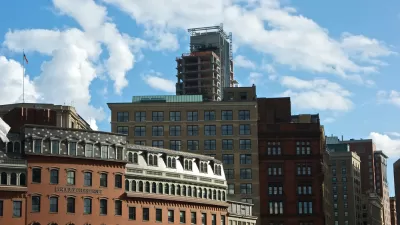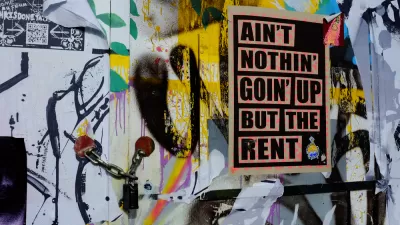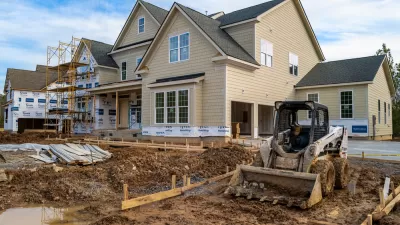The Boston Globe casts doubt on the idea that large amounts of new housing in Boston will be able to reduce already high housing prices in the city.

Evan Horowitz argues against a "build, baby, build" agenda as the solution to the city of Boston's high costs of housing.
Such a strategy, also sometimes called YIMBY, for "Yes In My Backyard," has its limits, according to Horowitz. "New construction doesn’t just mean more options for people who are already here. It means more people moving in. So at the end of all its building, Boston could end up denser yet just as expensive."
Horowitz begins the argument by acknowledging that the city of Boston is one of the slowest-building cities in the United States, with multiple obstacles to a pro-development agenda.
But that doesn't mean that Horowitz accepts that Boston's reluctance to build new housing in large numbers is what's making the city's real estate market more expensive. To make that point, he calls on analysis of rising housing costs in cities around the country—some of the cities with the fastest rising prices are also fast-building cities. "Some construction-friendly cities — like Dallas and Raleigh, N.C. — have seen fairly substantial price increases, comparable to Boston," writes Horowitz. "Meanwhile, the cities with the most restrained cost growth are Chicago and Pittsburgh, which haven’t been doing much building at all."
Finally, the article concludes with the question of whether Boston should build more or not. In the end, Horowitz does support a more pro-development regulatory environment—but not for the reason of lowering housing prices in the city.
FULL STORY: Why more housing won’t make Boston much cheaper

Study: Maui’s Plan to Convert Vacation Rentals to Long-Term Housing Could Cause Nearly $1 Billion Economic Loss
The plan would reduce visitor accommodation by 25,% resulting in 1,900 jobs lost.

North Texas Transit Leaders Tout Benefits of TOD for Growing Region
At a summit focused on transit-oriented development, policymakers discussed how North Texas’ expanded light rail system can serve as a tool for economic growth.

Why Should We Subsidize Public Transportation?
Many public transit agencies face financial stress due to rising costs, declining fare revenue, and declining subsidies. Transit advocates must provide a strong business case for increasing public transit funding.

How to Make US Trains Faster
Changes to boarding platforms and a switch to electric trains could improve U.S. passenger rail service without the added cost of high-speed rail.

Columbia’s Revitalized ‘Loop’ Is a Hub for Local Entrepreneurs
A focus on small businesses is helping a commercial corridor in Columbia, Missouri thrive.

Invasive Insect Threatens Minnesota’s Ash Forests
The Emerald Ash Borer is a rapidly spreading invasive pest threatening Minnesota’s ash trees, and homeowners are encouraged to plant diverse replacement species, avoid moving ash firewood, and monitor for signs of infestation.
Urban Design for Planners 1: Software Tools
This six-course series explores essential urban design concepts using open source software and equips planners with the tools they need to participate fully in the urban design process.
Planning for Universal Design
Learn the tools for implementing Universal Design in planning regulations.
Ascent Environmental
Borough of Carlisle
Institute for Housing and Urban Development Studies (IHS)
City of Grandview
Harvard GSD Executive Education
Toledo-Lucas County Plan Commissions
Salt Lake City
NYU Wagner Graduate School of Public Service





























